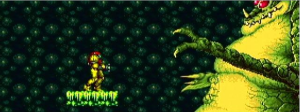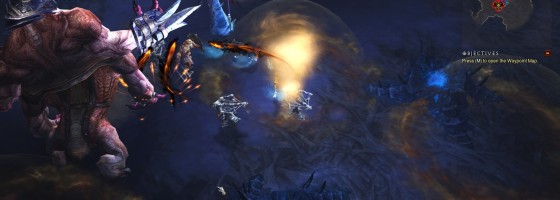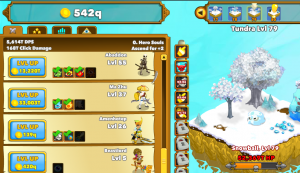Power curves are an effective form of progression in just about any game to motivate someone to keep going. For today’s post, I want to talk about the three elements of power curves and what they mean towards motivating someone to continue.
I’ve talked about power curves before and how they relate to progression. This time, we’re going to focus on the actual power curves and what elements contribute to making the player feel stronger.
Enemy Power:
The easiest way to show progression via a power curve comes from the enemies that stand in our way. Any designer knows that you want to have a curve in terms of enemy power and threat level throughout your game. Not only is this important for providing a balanced experience, but it keeps the threat level growing.
You can see this in MMOs where common thieves and rats become warlords and demons as you level up and grow. Of the three points, this is the easiest one to define, as they’re not built around the player per say. Talking about enemy design and balance is another topic and one too big for today’s post.
Scaling Power:
Next are elements that scale up, or in other words: Getting bigger numbers. Scaling is very in RPGs and clicker games. What the player is doing is not changing, just the scale of the action. The feeling of power can come from either the size of the numbers or the increased speed that the player is doing the task.
As long as you don’t run out of numbers, you can keep extending the curve indefinitely. The problem with a scaling power curve is that once the player loses interest in it, they’re not going to want to continue.
Many titles built on RPG mechanics tend to focus on scaling power curves, but this is only a band-aid fix.
With the Division for example, the end game at the moment lacks meaningful progression due to the focus of the gear rating or GR. Eventually the player will realize that nothing is really changing from one number to the next.
And if your game does have a fixed limit of power, it becomes easy for expert players to min/max to get the most optimal value out of their gear.
Another potential problem with scaling elements is being able to properly show the power gain against the enemies. If the player doesn’t grow in power fast enough, it won’t feel like they’re making progress. But if the player’s power is growing too fast, then the rest of the game will feel like a cakewalk. When it comes to showing the player getting stronger, our final point includes the best examples.
Hard Upgrades:
Hard upgrades represent permanent improvements to the player’s ability to play the game. Unlike scaling elements, these upgrades fundamentally alter the game. A good example would be the upgrades seen in metroidvania-styled games.
As the player gets more upgrades, how they play and get around the game will change. This makes it easy to chart their growth and get motivated to keep playing.
Diablo 3’s constant introduction of new upgrades via skills or runes was a great motivator to climb the leveling curve.

Metroidvania design is about how the player and level design changes through the use of hard upgrades
The problem with hard upgrades is that there are only so many that the designer can add to a single game. Eventually, the game will fall back on scaling elements to keep the power curve growing.
One solution is to limit the hard upgrades that can be used at any given time. In effect, you’re creating a “deck” that the player can customize to their specifications.
Another key consideration is the fact that the game must grow to use the new upgrades in order for the hard upgrades to show an impact. In Metroidvania-styled games, the later parts of the game will feature more challenges or require the upgrades unlocked in order to get through them.
Growing Up:
Understanding how to influence the power curve is an important part of game design progression. As we’ve talked about, progress always has to be a constant in your game’s design. Once the player feels like nothing is happening, there’s a good chance they’re going to stop playing.



